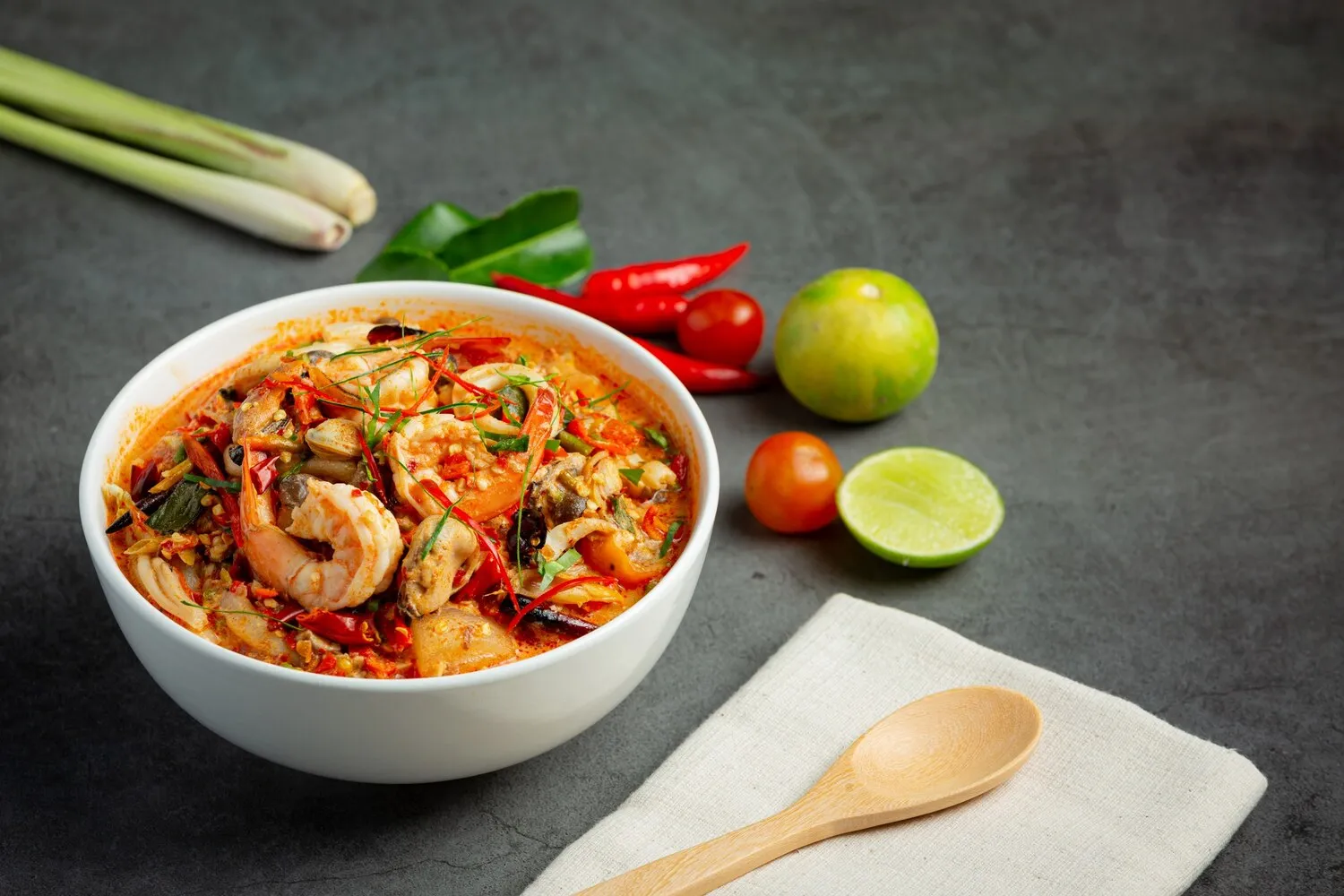
Phở
Traditional Vietnamese noodle soup with beef or chicken, herbs, and spices.
Nutrition Facts
* The % Daily Value (DV) tells you how much a nutrient in a serving of food contributes to a daily diet. 2,000 calories a day is used for general nutrition advice.
BÚN
Phở originated in the early 20th century in Northern Vietnam, likely during the French colonial period. Some theories suggest it evolved from a combination of local noodle soups and French beef stew (pot-au-feu). The dish gained popularity and spread throughout Vietnam, especially after the division of the country in 1954, with regional variations emerging.
Phở is more than just a dish; it's a symbol of Vietnamese culture and national identity. It's a common street food, a breakfast staple, and a comfort food enjoyed throughout the day. It represents Vietnamese culinary artistry and resourcefulness.
A Daily Ritual
Phở is often eaten for breakfast, but can be enjoyed any time of day. Many Vietnamese people start their day with a bowl of phở at a local street vendor or restaurant.
Regional Variations
While the basic components remain the same, phở varies regionally. Northern phở (phở bắc) typically has a cleaner, simpler broth, while Southern phở (phở nam) tends to be sweeter and more heavily garnished.
A Symbol of Home
For Vietnamese people living abroad, phở often evokes feelings of nostalgia and connection to their homeland. It is a dish that is often shared with family and friends, representing Vietnamese hospitality.
Phở is characterized by its savory, aromatic broth, tender protein (typically beef or chicken), soft rice noodles, and fresh herbs. The balance of flavors is key, combining warmth, freshness, and a hint of spice.
The broth is the soul of phở, traditionally made by simmering beef bones (or chicken bones for chicken phở) for several hours with spices like star anise, cinnamon, cloves, black cardamom, fennel seeds, and charred ginger and onion. The broth is then carefully seasoned with fish sauce, salt, and sugar. Rice noodles, called bánh phở, are flat and wide. Protein options include thinly sliced rare beef (phở bò tái), well-done beef brisket (phở bò chín), or shredded chicken (phở gà). Garnishes are essential and typically include fresh herbs like cilantro, Thai basil, and mint, bean sprouts, lime wedges, and sliced chili peppers. Optional additions include hoisin sauce and sriracha for extra sweetness and heat.
Broth is Key
The quality of the broth is paramount. A well-made broth is clear, fragrant, and deeply flavorful. Don't be afraid to ask about the broth-making process if you're at a restaurant.
Customize Your Bowl
Feel free to adjust the garnishes to your liking. Add more herbs, bean sprouts, or chili peppers to create your perfect bowl. Squeeze lime juice in for a burst of acidity.
Noodle Texture
The rice noodles should be soft and slightly chewy. If the noodles are too mushy or too firm, it can detract from the overall experience. Freshly made noodles are always best.
Eating Etiquette
Traditionally, phở is eaten with chopsticks and a spoon. The chopsticks are used to eat the noodles and meat, while the spoon is used to drink the broth.
Explore additional Soup dishes and restaurants
Explore SoupDiscover top dining spots and culinary experiences in Antwerpen.
Explore AntwerpenLearn more about the food culture, restaurant scene, and culinary heritage of Belgium.
Explore Belgium